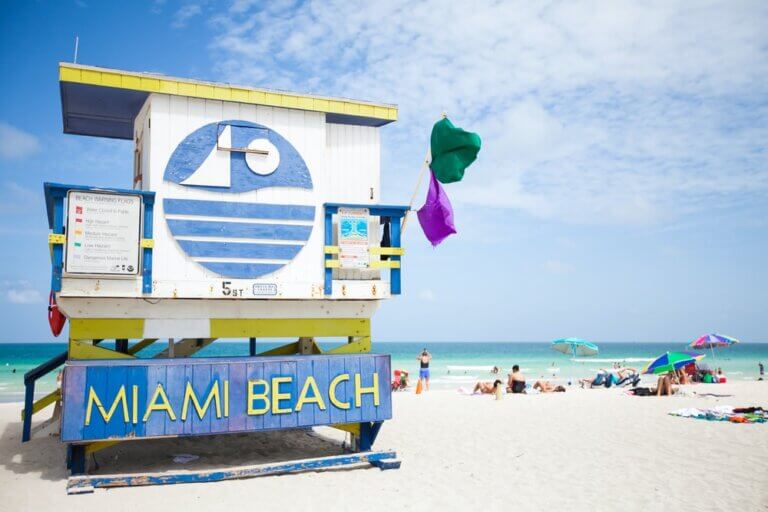Summer 2021 is back on for UK holidaymakers heading to Europe.
Further to the UK government’s announcement that Britons who have been double-vaccinated can travel to amber list countries after 19 July without quarantining upon their return, holiday bookings to Southern Europe look set to soar, according to media reports.
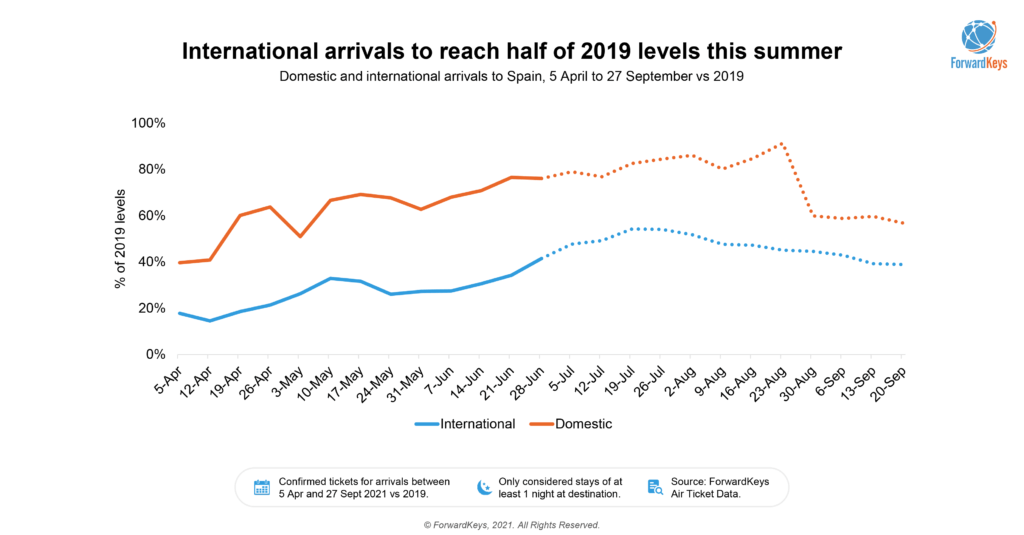
Airlines reported a five-fold rise in bookings for foreign travel yesterday (8 July) after the government approved quarantine-free holidays in 140 destinations on the ‘amber-list’.
“This is the news that UK holidaymakers have been looking forward to, as it finally signals a meaningful restart to international travel,” said Steve Heapy, chief executive of Jet2. He said his firm would restart flights and holidays to all ‘amber-list’ destinations from 19 July onwards. Within hours, Spanish package holiday dealswere trending on social media.
With France, Spain and Portugal leading the list of countries, Spain in particular is under the spotlight, further to the last UK Government travel update, that put the Balaeric Islands on its green travel list.
Flights to Ibiza almost doubled in price as British holidaymakers scrambled to book tickets after the island was added to the government’s ‘green-list’ at the end of June.
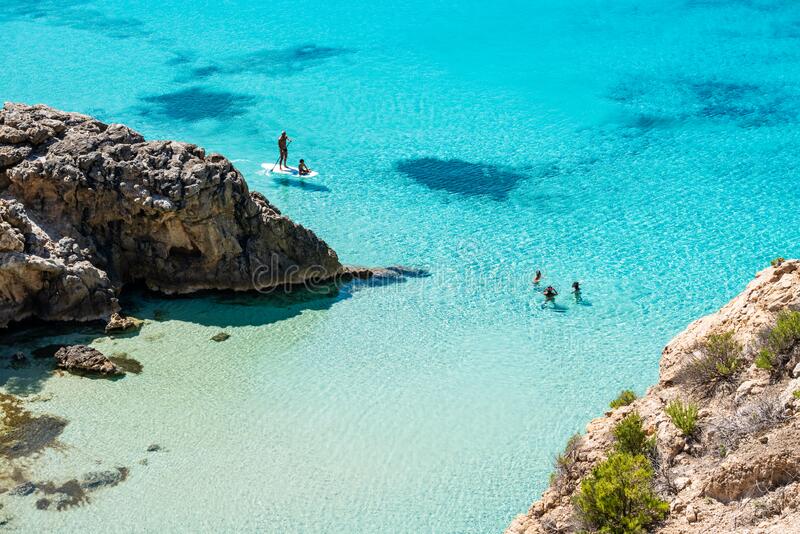
Meanwhile, airlines including Easyjet, Ryanair and Wizz Air have all reported rising numbers of flight bookings to Southern European destinations such as Spain, Portugal and Italy. Easyjet said flights to Alicante and Malaga in Spain, Faro in Portugal and Nice in France have exploded over the last 24 hours with bookings up 400% compared to a week ago. Ryanair is selling tickets for £4.99 to dozens of European destinations in a bid to cash in on the holiday bookings surge.
Ryanair’s passenger numbers grew in June – the low cost airline carried 5.3 million passengers on 38,000 flights last month. By comparison, in June 2020, Ryanair carried only 400,000 passengers. Wizz Air carried 1.55 million passengers in June, more than triple the 502,000 passengers who flew in the same month last year.
Summer outlook for Spain: Ibiza wins over local and international markets.
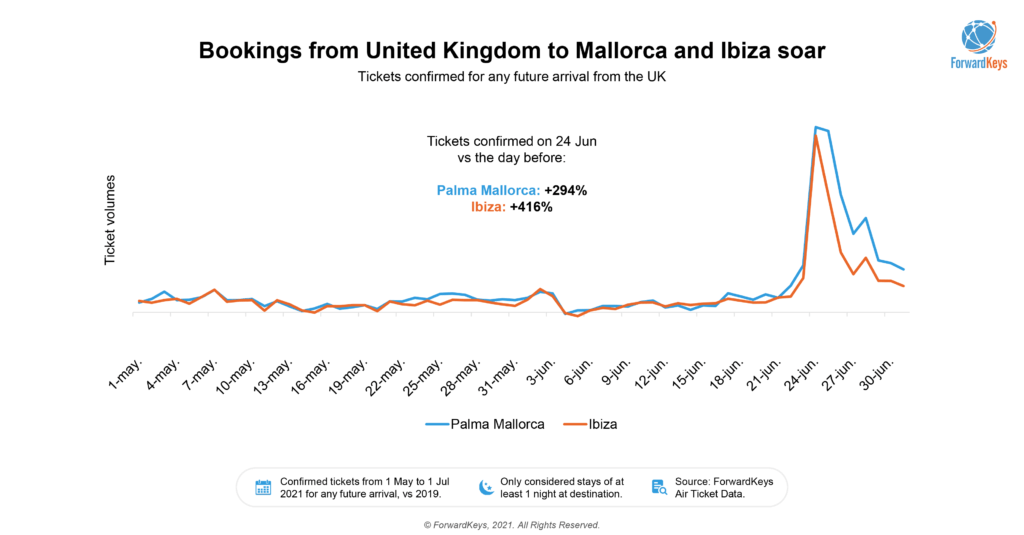
Ibiza is top pick for flights data analyst, ForwardKeys that says the Balaeric Island hotspot is winning over local and international markets based on its analysis of recent bookings data.
In 2019, the tourism industry accounted for over 12% of Spain’s gross domestic product (GDP). Last year, it accounted for just 5.5% and many are wondering how the traditional tourism hotspot is positioned this summer.
Domestic travel in Spain this summer: appeal of the Balearic Islands
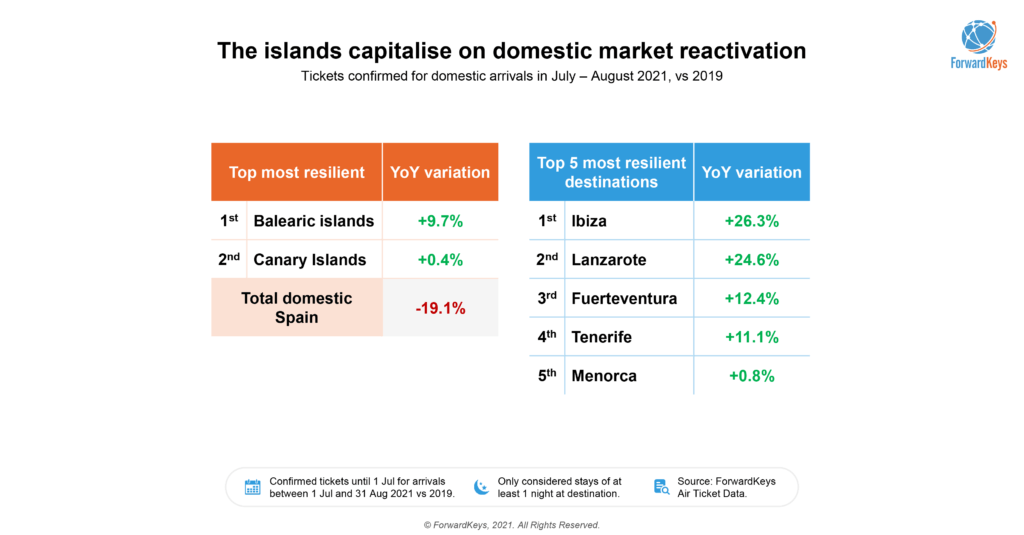
While the international tourism market is still recuperating and growing to 50% of traveller volumes vs 2019 July figures, all eyes have been on the domestic travel market pulling up the tourism sector during the pandemic and proving to be the most resilient. Currently, domestic travel in Spain is -19% on travellers when compared to July and August in 2019.
The top-performing destinations this summer are the Balearic Islands, up 9.7% and the Canary Islands, up by 0.5% to the same period in 2019.
“This means that the Balearics and Canary Islands will receive more domestic travellers than in the pre-pandemic period,” says Juan Gomez, Insights Expert at ForwardKeys.
The real tourism winner this summer in Spain of both international and domestic visitors is Ibiza. It is up by 26% for domestic travel and down just 2% for international travel.
International travel into Spain this summer: Scandinavian dominance
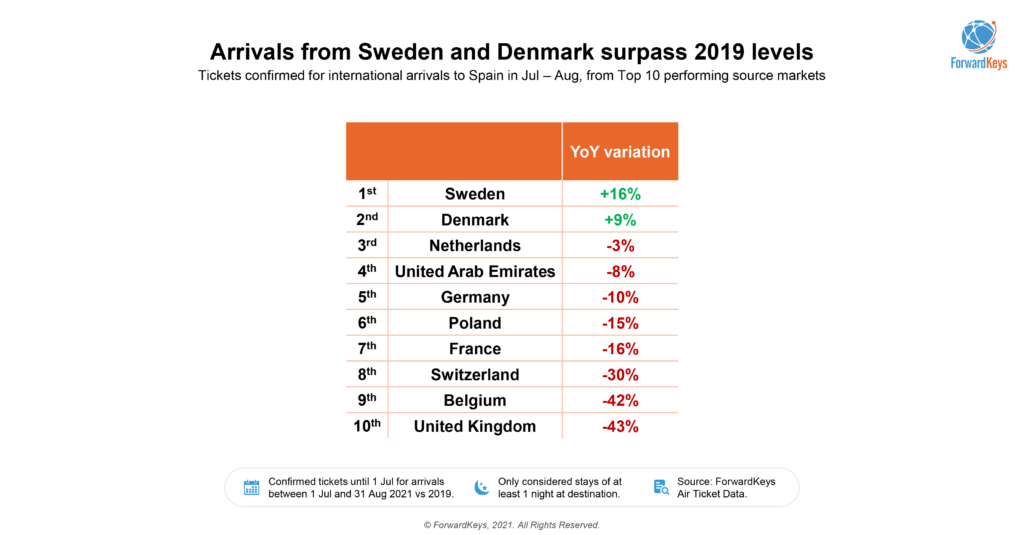
“Despite the many international travel restrictions currently in place, Spain is managing to attract a wider pool of travellers from non-traditional markets – something pivotal for governments and tourism boards to factor in for 2022 travel strategies and tourism plans,” says Gomez.
Visitors from Sweden and Denmark are expected to exceed 2019 levels to Spain. And the good news is that they will stay longer.
“The average length of stay has crept up from 9 days to 12 days while there has also been a 5% increase in stays over 14 days for travellers from Sweden and Denmark,” says Gomez.
“In terms of passenger profiles, travelling couples has increased by 7% for both countries and solo travellers from Sweden has grown by 2%,” adds Gomez.
Flight connectivity is another important element in driving tourism traffic. “The fact that the UAE makes the top five most resilient source markets is an interesting one as, since 9 July, Etihad has twice-weekly flights to Malaga. Another example of improved flight connectivity is the Valencian community, which is now second most resilient for international arrivals, after the Balearic Islands, at -36.3%. Its resilience being a testament to an increase in seat capacity and airline partners.”
Balaerics and Valencian community
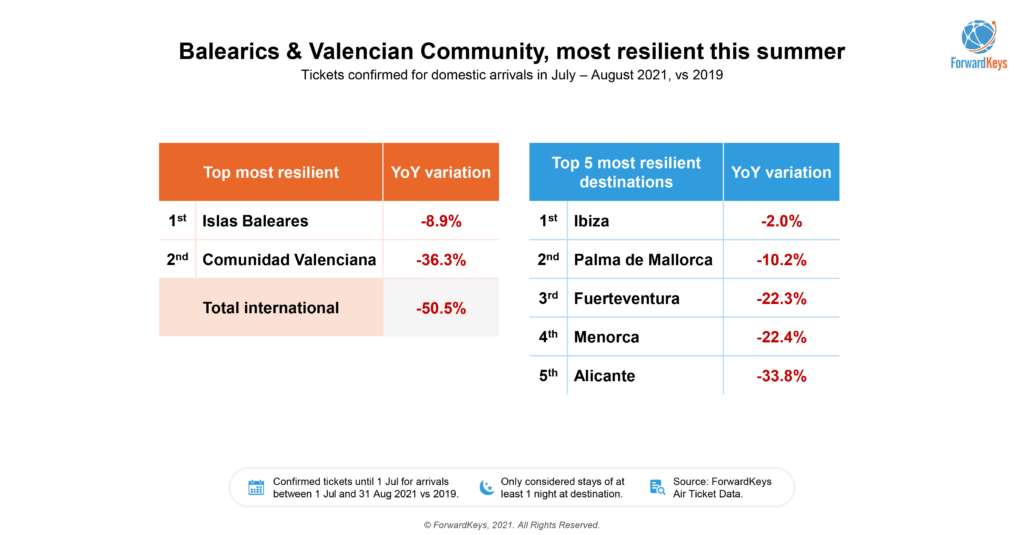
The top five most resilient cities in Spain, attracting the most international travellers this summer are: Ibiza, -2%; Palma de Mallorca, -10%; Fuerteventura, -22%; Menorca, -22%; and Alicante, -34%.
“With last-minute bookings being the new normal, we can only expect these figures to pick up as the demand is unleashed. We saw this once the UK green list destinations were announced with a spike of 416% in issued tickets for Ibiza on July 24 when compared with the day before,” concludes Gomez.
Echolution takeout:
As the tourism market starts to recover, travel retail brands can finally plan ahead and target travellers who have pent-up demand for holiday spending. Echolution works with a range of agnostic data partners, showcasing how to market to key traveller demographics by destination and origin market – from the point of booking – by spending profile and by brand preferences.



